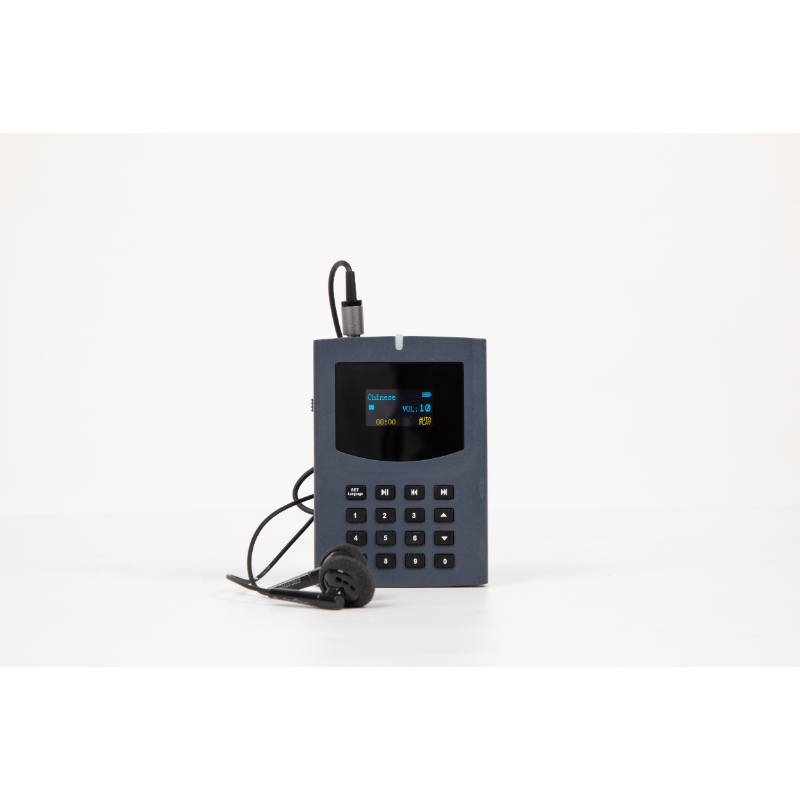The Complete Guide to Audio Guide Equipment: Revolutionizing the Visitor Experience in Museums and Historical Sites
Release time: 2025-05-06
In recent years, audio guide equipment has transformed the way visitors engage with museums, historical sites, and tourist attractions. By providing an interactive, self-paced learning experience, these devices have become essential in modern-day tourism. In this guide, we’ll explore the different types of audio guide equipment, their applications, and why they are crucial in enhancing the visitor experience.
Types of Audio Guide Equipment
When it comes to audio guides, there are several types of equipment available, each offering unique features for different environments and user needs.
1. Handheld Devices
Handheld audio guides are among the most common types found in museums and historical sites. These devices typically feature a simple interface, with users selecting numbered stations to access specific audio content related to exhibits. Often, handheld devices are rented at the entrance of attractions.
2. Smartphone Audio Guides
Smartphone audio guides are gaining popularity due to their convenience and cost-effectiveness. Visitors can download an app that provides audio narration directly on their smartphones. This allows for greater flexibility, as visitors can use their personal devices to engage with the content at their own pace.
3. Wireless Audio Systems
Wireless audio systems are commonly used in group tours. These systems consist of a small receiver that visitors wear around their necks, paired with a wireless transmitter used by the guide. This ensures that all participants can hear the guide’s narration clearly, even from a distance or in noisy environments.
Applications of Audio Guide Equipment
Audio guide equipment is not limited to museums. It has a broad range of applications in various sectors, including:
Museums
In museums, audio guides provide an engaging way for visitors to explore exhibits without the need for a human guide. These guides offer detailed explanations, historical context, and even fun facts about the items on display. They also allow visitors to explore the museum at their own pace.
Historical Sites
At historical sites, audio guides offer visitors a deeper understanding of the history and significance of the location. Whether it’s a battle site, ancient ruins, or a famous landmark, audio guides help bring the past to life with detailed storytelling and background information.
Educational Institutions
Educational institutions, such as science centers, botanical gardens, and art galleries, are increasingly adopting audio guide technology to enhance their educational offerings. These guides provide a rich, informative experience for students, school groups, and casual visitors.
Group Tours
Group tours often use audio guide systems to ensure that every participant can hear the guide’s narration clearly, regardless of group size. Wireless systems provide an excellent solution for large groups, as they ensure everyone stays connected to the guide’s presentation.
Why Audio Guide Equipment is Important
The benefits of using audio guide equipment are numerous, making them an essential tool in the tourism and education industries.
Enhanced Learning Experience
Audio guides provide visitors with an informative and immersive learning experience. By incorporating detailed commentary, stories, and historical context, they transform a simple tour into an engaging educational experience.
Self-Paced Exploration
Unlike traditional guided tours, audio guides allow visitors to explore at their own pace. This flexibility is particularly valuable in museums and historical sites, where visitors may want to spend more time at specific exhibits or move quickly through others.
Multilingual Accessibility
Many audio guides offer content in multiple languages, catering to an international audience. This ensures that visitors from different backgrounds can enjoy the tour in their native language, enhancing the inclusivity of the experience.
Cost-Effective
For museums and historical sites, audio guides are a cost-effective alternative to hiring multiple tour guides. They also help manage large numbers of visitors, providing a personal experience without the need for a one-on-one guide for each group.
Increased Visitor Satisfaction
Ultimately, the primary goal of any audio guide is to improve the visitor experience. By offering informative and interactive content, audio guides help visitors gain a deeper appreciation of the site, leading to higher satisfaction and more positive reviews.
The Future of Audio Guide Equipment
As technology continues to advance, the future of audio guides looks incredibly exciting. Here are some trends that are shaping the future of this technology:
Augmented Reality (AR)
The integration of augmented reality (AR) is expected to revolutionize the audio guide industry. AR technology can overlay digital content on the physical environment, allowing visitors to interact with exhibits in innovative ways, such as seeing historical figures come to life or exploring virtual reconstructions of ancient ruins.
AI Integration
Artificial intelligence (AI) is also making its way into audio guide systems. AI-powered guides can offer personalized content, adapting to the visitor’s interests and preferences. This could include dynamic routes, content recommendations, or even voice recognition, allowing the guide to interact with visitors in a more engaging and customized manner.
Conclusion
Audio tour guide system equipment plays a crucial role in enhancing the visitor experience at museums, historical sites, and tourist attractions. By providing accessible, informative, and interactive content, audio guides help visitors learn in a more engaging and flexible way. As technology continues to evolve, the future of audio guides promises even more exciting developments, making them an essential tool in the tourism and education sectors.
Are you ready to explore the world with audio guides? Check out the latest technologies that are changing the way we experience history and culture!



